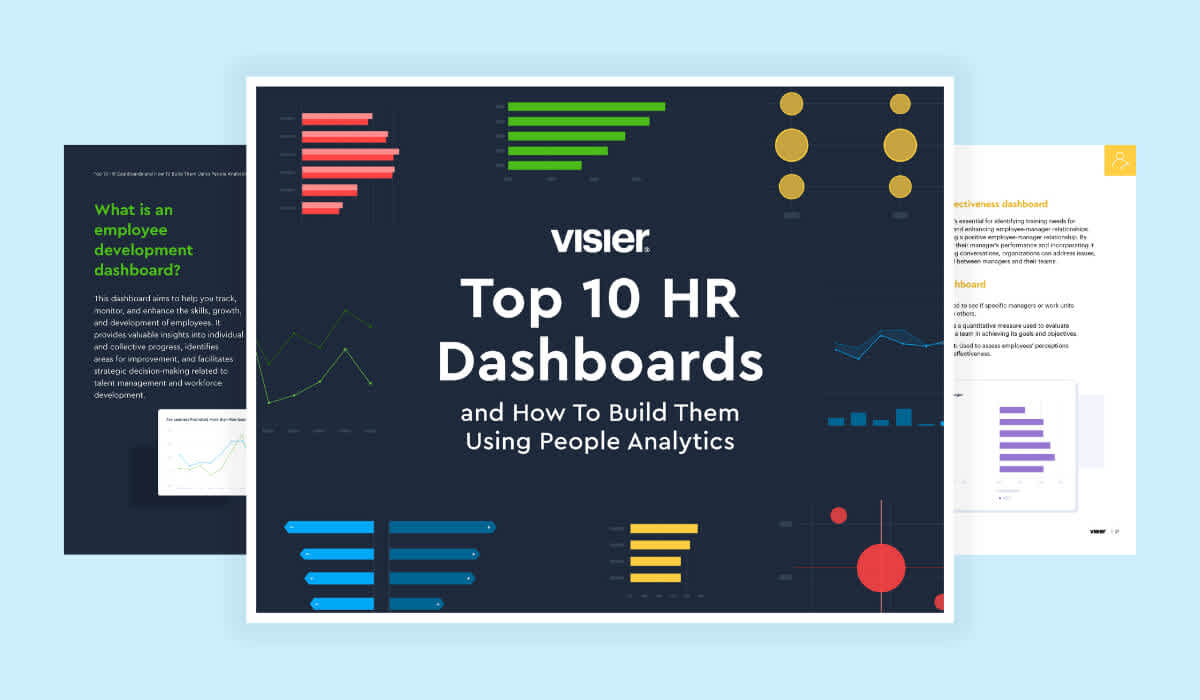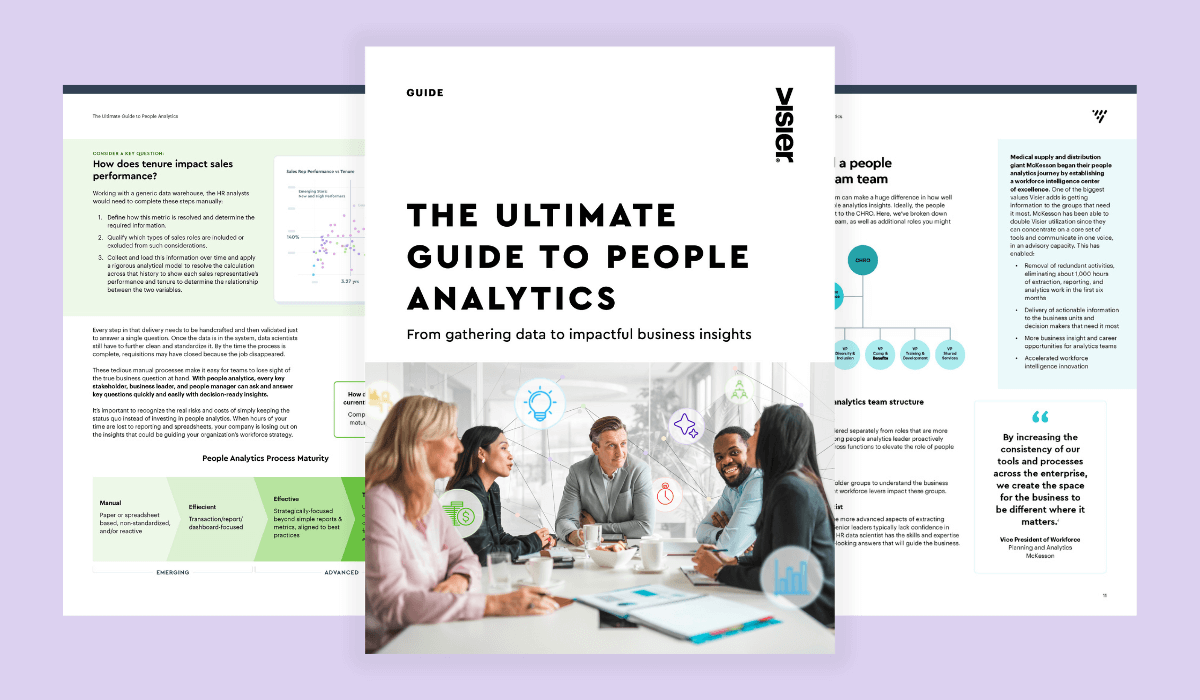What Is Employee Retention and Why Does It Matter?
Employee retention is critical to your company’s long term success, and to the happiness of your employees. Learn more.

Employee retention is the ability to keep employees on board once they are hired. Retention can be impacted by turnover that may be both involuntary or voluntary.
Involuntary turnover occurs when the employee’s supervisor or manager determines that they are no longer a good fit with the company due to performance issues, or during a layoff or reduction in force.
Voluntary turnover is when employees decide they want to leave the company—often to take a position with another organization.
This is the type of turnover that we are most concerned about here.
What drives employee turnover?
By now we’re all familiar with the term “the great resignation,” referring to a mass exodus of employees during the pandemic. In November 2020, the nation’s ‘quit rate’ reached a 20-year high,” according to Pew Research.
The 10 major drivers of this exodus, according to Pew include:
Low pay (37%)
No opportunities for advancement (33%)
Feeling disrespected at work (35%)
Childcare issues (24%)
Not enough flexibility (24%)
Benefits not good (23%)
Relocation (22%)
Working too many hours (20%)
Working too few hours (16%)
Employer-required COVID-19 vaccine (8%)
These are all drivers that employers have an opportunity to positively impact. Doing so can help them reap important benefits.
What are the benefits of employee retention?
Obviously, organizations want to keep talent on board. They’ve invested a lot into attracting that talent, onboarding, and training them. Losing talent means the loss of that investment. The cost of that loss is significant. Bersin by Deloitte research indicates that the total cost of voluntary turnover is $109,676 per exiting employee for an average U.S. organization.
But some costs of turnover may be harder to calculate, while being equally if not more detrimental. For instance, a new Wharton study drew a “direct link between higher quit rates and product failure for a smartphone manufacturer.” They were able to quantify these impacts: “Each percentage-point increase in the weekly turnover rate for workers increased product failure from 0.74% to 0.79%.”
These are impacts all organizations want to avoid. There are many benefits associated with employee retention, including:
Reduced costs. As we’ve seen, turnover can be costly. Not only do companies lose the value of the talent they’ve trained and who understand the company and its culture, but they also must invest in recruitment to replace that talent.
Increased productivity. Employees who have tenure with an organization understand their jobs and how what they do contributes to the overall success of the organization. They’re productive and positively contribute to the bottom line.
Increased morale and satisfaction. Turnover can be draining to an organization in ways beyond the monetary costs. Turnover creates tension and can make other employees question their own decision to stay with the organization. An engaged workforce drives better morale and satisfaction.
The ability to retain institutional knowledge. Employees amass a great deal of knowledge as they work with an organization—knowledge that is lost when they leave. This can be an even greater loss when they take that knowledge to a competitor.
Employers know the value of keeping top talent on board, but that doesn’t mean it’s easy. Understanding the drivers of turnover as well as the drivers of retention can help them maximize the investments they’ve made in attracting talent, and ensure they reap the benefits of long term employee retention.

7 ways to improve employee retention
There are some important steps organizations can take to help them both understand the drivers of turnover and take steps to minimize or eliminate those drivers.
1. Understand what employees value.
While research from other organizations can be helpful and can yield insights about potential opportunities to stem turnover, every organization will have their own unique drivers of both turnover and employee satisfaction. Consequently it’s important to understand what your employees value and how that may vary based on their job, the department they work in, their supervisor, their length of service, their life stage, etc.
Exploring these variables through both qualitative (e.g., one-on-ones) and quantitative (e.g., polls and surveys) measures can help companies stay continually on top of what matters most to their employees. Sentiments change, and the environment we work in changes, as we’ve all seen during the pandemic.
Continually monitoring employee sentiment is important to help minimize the loss of talent.
2. Hire right.
Employers have an opportunity at the outset to boost the odds that their employees will stay on board by hiring the “right” people. Hiring right involves a combination of bringing people on board with the skills required to perform their jobs and values that align with the company’s culture.
3. Provide a culture aligned with employee values.
Once on board, employees need to feel that they’ve made the right decision and that they are valued by the organization. Too often, for instance, as companies focus on building diversity in their talent pool they fail to introduce measures to ensure inclusivity amongst their new diverse workforce.
If this sounds like your organization, ask yourself the following questions:
Does your culture align with employees’ values?
Is your culture a true reflection of what you conveyed to candidates during the hiring process?
Have you taken steps to ensure that you have an inclusive, supportive environment that provides employees with a sense of belonging and support?
If you answered “no” to any of those questions, then it may be time to look at the culture you’re fostering at your organization. Culture matters. Ensuring that your culture is aligned with employee values can have a significant impact on their decision to stay on board.
4. Offer competitive pay and benefits.
We’ve seen through Pew’s research that pay and benefits matter to employees. The key issue here is competitive. If you can’t offer what other employers can offer, you shouldn’t be surprised if you start to see a talent exodus.
Today’s employees have an increasing number of choices of where to work as remote/hybrid work models have opened up new possibilities literally around the globe. Remaining competitive with your total compensation packages can help you be an employer of choice.
5. Be a great place to work.
In 2022, Cisco, Hilton, and Wegmans Food Markets, Inc., were the top three places to work according to Fortune’s annual list of the “100 Best Companies to Work For.”
When employees consider your company to be a great place to work, they’re less likely to leave to find a job elsewhere. Reviewing Fortune’s list and the types of things that these top companies are doing to attract and retain employees can provide you with insights and ideas to adapt in your own workplace.
6. Keep the lines of communication open.
Communication is the foundation for every aspect of an employee’s workplace experience: from hiring, through to onboarding, coaching, counseling, and performance management. Employees need to understand their roles, their goals and expectations, how their work impacts the organization, what they are doing well,areas of opportunity for improvement, and much more.
This communication needs to be two-way, with employees offered the opportunity to provide input, make suggestions, and offer feedback. Effective two-way communications helps to ensure that organizations and their HR leaders and managers are fully aware of what matters most to employees and where there are opportunities to improve to help retain the best and the brightest.
7. Use workforce analytics to identify best practices and opportunities for improvement.
It’s critical to understand the drivers of employee retention and, conversely, turnover. What is the scope of the turnover? How does it vary between departments/divisions? How does it vary based on length of service? What other factors impact employees’ decisions to leave?
Workforce analytics can help you use data to discover and share insights about your workforce that will lead to better business decisions.
Understanding the correlations between workplace conditions, policies and practices, and resignations can help identify opportunities to make improvements that positively impact employee satisfaction, engagement, and, by extension, and retention.
For instance, how is turnover impacted by things like compensation ratio, promotion wait times, pay increase, tenure, performance, training opportunities? With this knowledge, you can make informed decisions that can have a marked—and measurable—impact on turnover.
Employee retention is top-of-mind for business of all kinds and sizes today and will likely stay top-of-mind for the foreseeable future. Hiring the right employees, understanding what matters to them, and taking steps to build a workforce that is supportive and that meets employees needs and expectations can help companies stem the tide of turnover.
Employee retention FAQs
What is employee retention?
Employee retention refers to a company’s ability to prevent employees from leaving—known as employee turnover. It’s both a statistic that represents how long employees remain at an organization, and a set of practices and strategies to ensure employees are happy and willing to remain under the company’s employment.
What causes employee turnover?
The primary causes of employee turnover, according to Pew Research, include:
Low pay (37%).
No opportunities for advancement (33%).
Feeling disrespected at work (35%).
Childcare issues (24%).
Not enough flexibility (24%).
Benefits not good (23%).
Relocation (22%).
Working too many hours (20%).
Working too few hours (16%).
Employer- required COVID-19 vaccine (8%).
What are the benefits of employee retention?
The primary benefits of employee retention for organizations includes reduced costs, improved productivity, increased morale and satisfaction, and the ability to retain institutional knowledge.


